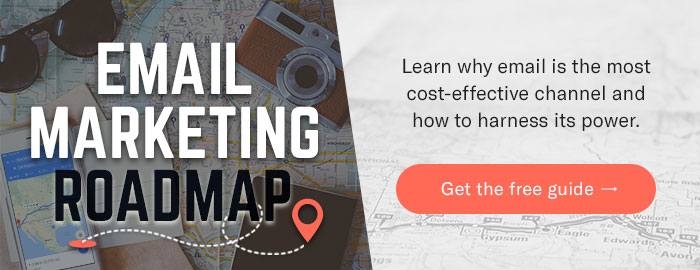Remember the good ol’ days, when connecting with new customers meant doing a local TV spot or putting an ad in the newspaper? While many traditional methods of advertising still provide solid returns, they aren’t enough to keep your home services business relevant in 2016.
Let’s look at 10 ways you can make your business more relevant both locally and online.
1. Do Excellent Work, Ask for Referrals
If you want to stay relevant, you have to provide an excellent customer experience. Once you have a happy customer, ask for a referral. Ninety-one percent of consumers are willing to give them; you just need to ask. And it’s a good idea too, considering that small businesses get 85 percent of new business through word-of-mouth referrals.
2. Pay Attention to Online Reviews
Nowadays, everyone uses the internet to find, research and discuss local businesses, and 88 percent of consumers trust online reviews just as much as personal recommendations.
So when you replace the shingles on Billy Joe’s garage, the tale of his experience with your business — positive or negative — will likely go beyond the ears of his pal Bobbie Sue. If he leaves a review on Yelp, your business could be affected for years to come.
In fact, 74 percent of home services customers consult Yelp, according to Software Advice. It’s the most popular online review site for the home services industry, whether you’re talking about pest control, plumbing, HVAC, electrical, cleaning or lawn care.
3. Build Your Online Presence
Start by claiming your business profiles on all relevant social media and online review sites. This will allow you to monitor the conversations around your brand and engage with prospects and customers online, especially those who have complaints or questions.
Make sure your website is clean and easy to use. Optimize for relevant search terms and load up on the valuable content that shows off your expertise. Add testimonials, examples of your work, FAQs and industry affiliations — anything that adds credibility. And don’t forget the CTAs!
Take advantage of Google My Business to improve your visibility in search.
4. Learn From Your Audience
Google Analytics gives you insight into audience behavior. You can see which search terms are being used to find your website, which links are being clicked and which content is being downloaded.
Lead capture forms can be used to gather contact data that you can not only add to your database for marketing purposes but also use to track how individual users engage with your web content. Use the information you gather to create more targeted email marketing campaigns, make genuine connections and make your business more relevant.
5. Create Custom Content
Use your content to provide answers and solutions to the questions and problems you encounter on the job daily. For example, an AC pro might provide AC maintenance tips for homeowners, while a lawn care specialist might discuss different types of shrubbery for wind screening.
And if you’re not blogging already, consider this:
- Small businesses that blog report 126 percent more lead growth than companies that don’t.
- Companies that blog see a 55 percent increase in web traffic.
- 95 percent of businesses say blogging has improved their search rankings.
6. Connect With Customers Through Email
Email may feel like yesterday’s news, but MarketingSherpa found that 72 percent of U.S. adults prefer to communicate with businesses through email. From a marketing standpoint, email is consistently ranked the single most effective marketing channel for awareness, acquisition, conversion and retention.
The great thing about email is that it’s a direct line of communication with your target audience, and it can serve multiple purposes:
- Nurture existing relationships and stay top of mind for repeat business and referrals.
- Get referrals through email forwarding and social sharing.
- Ask for online reviews or testimonials.
- Treat recipients to special promotions, discounts, and limited-time offers.
- Track campaign results and gather behavioral data to improve future campaigns.
- Provide a more personalized experience through list segmentation.
And did we mention that 70 percent of consumers say they always open emails from their favorite brands?
7. Be Mobile Friendly
Did you know that more people access the internet from mobile devices (51 percent) than desktops or laptops combined (42 percent)? Or that more Google searches take place on mobile devices than on desktop computers? Or that more than half of emails are opened on a mobile device?
Meanwhile, only 56 percent of small businesses have a mobile-friendly website, and only a quarter of companies are optimizing their email campaigns for mobile. Set yourself apart from the competition; be mobile friendly.
8. Expand Your Social Circle
The statistics speak for themselves:
- 65 percent of U.S. adults are using social media.
- The average American spends 40 minutes per day on Facebook.
- 70 percent of a brand’s followers will retweet enjoyable content.
In other words, social media affords you the opportunity to engage with a dedicated, built-in audience, expand your reach and build your reputation via social sharing, and increase your web traffic and sales.
9. Offer Incentives, Discounts, and Promotions
According to Nielsen, coupons (15 percent) and promotions (14 percent) make the largest impact on consumer brand decisions prior to shopping. Meanwhile, advertising (print, broadcast and digital) made the smallest impact (3 percent). And looking for sales and coupons (59 percent) was the No. 1 rated pre-store digital activity, followed by looking over emails and online offers (28 percent).
Twitter reports that the top reasons users follow brands include:
- Discounts and promos (94 percent)
- Free stuff (88 percent)
- Updates on upcoming sales (79 percent)
As they say, give ‘em what they want!
10. Bundle Services for Added Value
On the other hand, don’t get too caught up in giving things away. Instead of trying to undercut the competition, you want to compete based on value.
Figure out how you can use or combine products and services to stand out from the competition. For example, a lawn care service may bundle services such as routine lawn maintenance, fertilization, and seasonal leaf cleanup or offer a discounted rate to homeowners who commit to a full year of service.
Wrap-up
Time marches on, but there’s no reason your home services business has to lag behind. And if you need help bringing your marketing strategy into 2016, we’re happy to help.



![Better Email Etiquette Equals Better Marketing Results [16 Rules]](https://www.outboundengine.com/wp-content/uploads/shutterstock_411184843-1-400x250.jpg)

